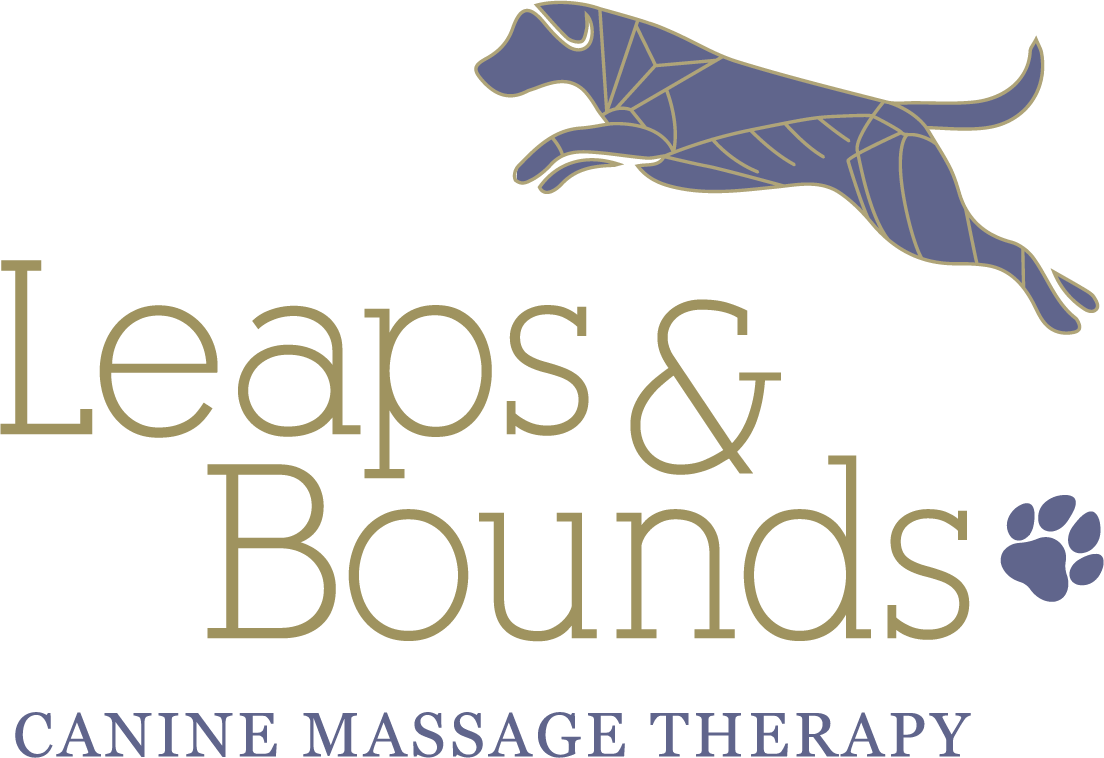Physiological features of Canine Massage Therapy
-
Reduces joint stiffness and pain.
Improved circulation brings more oxygen and nutrients to the bones.
As muscles become more flexible joint movement increases.
Reducing inflammation.
Reducing and resolving painful areas of overcompensation.
Decrease or manage protective muscle splinting.
Pain management.
-
Enhancing circulation to and from the muscles, increasing their nutrient supply and reducing waste product accumulation.
Promotes proper fibre alignment in healing soft tissues.
Improving suppleness and flexibility of muscles.
Stretching and realignment of scar tissue.
Reducing resting muscle tone.
Helping to reduce adhesions.
Reducing muscular fatigue, spasms and cramps.
Rebalancing muscle groups if compensation has been happening.
Promoting better posture.
Encouraging the natural dynamics of the muscle and return normal gait.
Eliminating trigger points.
Managing areas of pain and soreness.
Overall relaxation and sense of well-being, decreasing muscle tension.
-
Increased flow of lymph fluid, meaning improved ability to detoxify tissue and ward off infection through removal of excess fluid and toxins.
Increased count and performance of white blood cells.
Decreased swelling and inflammation, which decreases pain.
Accelerated healing for injuries, such as sprained joints.
Decreased congestion.
A general sensation of feeling lighter and more energetic.
-
Creating pressure in the muscle which helps to move the blood through congested areas of tissue (such as injury, trauma, lactic acid and general muscle soreness).
Releasing the pressure within the muscle which allows new, oxygenated blood to flow in.
Flushing lactic acid from the muscles.
Improving the circulation of lymph fluid which carries away metabolic waste and produces antibodies.
Lowering blood pressure.
Increasing vasodilation.
Increasing capilarisation.
Increasing venous return to re-oxygenate blood for tissues.
Increasing general blood circulation which improves nutrient intake and better removal of toxins and metabolic waste.
Improving bodily functions due to efficiency of circulatory system.
-
Promotes healthy skin and hair by increasing circulation, which brings blood rich in oxygen and nutrients to the dermal layer of the skin.
Promotes sebum production that helps to lubricate the skin and hair and helps the skins suppleness and resistance to infection.
Helps regenerate tissue which assists with wound healing.
Thermoregulation through the balance and circulation of fluids.
Releases adherences of the skin to the deeper tissues.
Increases circulation of both lymph and blood in the skin and subcutaneous tissues.
The ability to detect any issues with the skin early on, in order to refer back to a vet.

